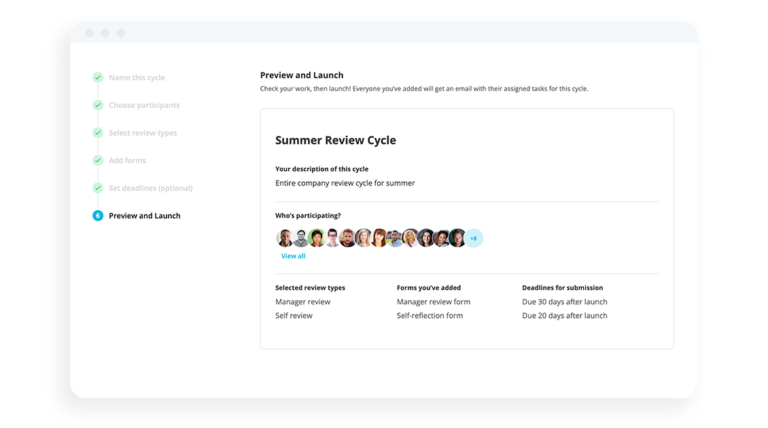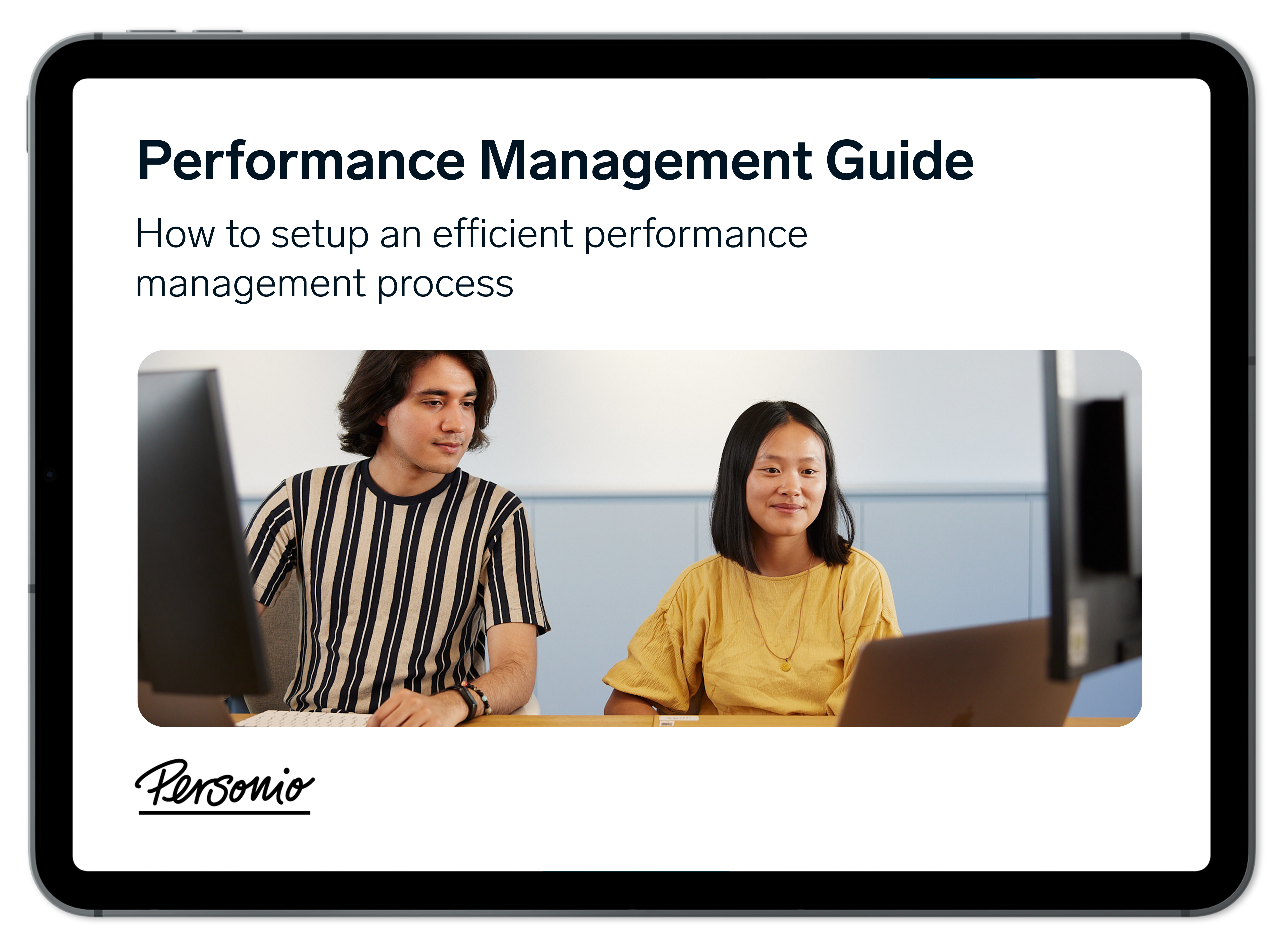Latest Blog Posts
The Complete Guide To The Skill Will Matrix

The Skill Will Matrix can get to the bottom of an organisation’s issues with declining performance and engagement, but how? In this guide, we cover the matrix, how to use it effectively and what it looks like in practice.
Tap into your team’s performance with our helpful guide today.
What is the Skill Will Matrix?
The Skill Will Matrix is a tool used by managers and leaders to assess an employee’s performance based on two factors: their skill (AKA their competencies) and their will (AKA their motivation).
In the 1970s, author Paul Hersey and leadership expert Blanchard created The Situational Leadership Model. This model—which later inspired The Skill Will Matrix—helps managers match their leadership style to a situation and individual to improve the outcome and overall team condition.
Skill vs Will: What’s the Difference?
Simply put, skill is how competent a worker is at a specific task or how effective they are in their role. Will is how motivated they are to complete their task or perform their role well.
It’s often easier to assess someone’s skill vs their will, as skill can be measured and evaluated objectively. In the workplace, some skills come naturally, while others are honed over time—but the same can be said for will.
Will, on the other hand, can be built up or torn down depending on a worker’s personal and professional goals, support system, confidence, leadership team and overall workplace culture.
Sometimes, an employee may not be as motivated as you’d like them to be. Or, their motivation and engagement may wane over time. But once you get to the heart of why that is, you can establish a strategy to fix it.
Take Employee Performance to New Heights

Automate performance cycles and help employees get better at what they do.
Performance With Personio
How The Matrix Works
The Skill Will Matrix compares an employee’s willingness to perform a task (high or low) to their level of skill in relation to that task (high or low).
Will | High Will, Low Skill |
|---|---|
Low Skill, Low Will | |
Skill |
To determine which category an employee belongs in, you need to gain some background information:
Review their employee profile and recent performance development reviews to get a complete picture of their responsibilities, training and career progression
Request feedback from their team members, managers and others familiar with the employee’s work and performance.
Meet with the employee to get their first-hand perspective on their skills and motivations.
Here are a few questions to consider when determining where an employee falls on The Skill Will Matrix:
Determining Skill Level:
What is their education level?
How many years of experience do they have in their role?
What are some examples of their demonstrated skills?
What are their strengths?
What are their weaknesses?
How much assistance do they need to complete their tasks or role successfully?
What training, courses or certifications have they completed?
How often do they receive negative feedback?
How often do they receive positive feedback?
Determining Will Level:
How ambitious are they?
Do they take on tasks or new responsibilities without being asked?
How engaged are they with their work?
What are their professional goals?
How often have they changed jobs in the past?
What is their general attitude like?
What are their working relationships with their team like?
After evaluating an employee, you can use this framework to place them into one of four categories:
Category 1: High Will, Low Skill This employee is motivated in their work but lacks the skills to perform their duties effectively. They’re typically early on in their career and are a great candidate for coaching or training, which can help close any skills gaps.
Category 2: High Will, High Skill This employee has above-average capabilities and is motivated to complete tasks and excel in their role—AKA your high-performers. Typically, someone in this category is looking to advance in their career and would make a good manager or leader. Managers should focus on nurturing and retaining these employees.
Category 3: Low Skill, Low Will Many employees who fall into this category are new hires who are still learning the ropes but are afraid to ask for help. Other times, they may be unprepared employees who don’t have the skills or education needed to perform their duties. In either case, they’ll need training, support, mentorship or—as a last resort—to be dismissed.
Category 4: High Skill, Low Will A lack of motivation is this employee’s weakness. They have the skills to do their role well, but they aren’t engaged in their work. This might be because they’re not being challenged enough or are bored in their position and need to find a new goal or incentive to work toward.
Where the employee lands on the matrix will determine which coaching technique their manager should use to improve their performance and engagement:
High Will | Guide | Delegate/Empower |
|---|---|---|
Low Will | Direct | Excite/Motivate |
Low Skill | High Skill |
An employee with High Will and High Skill should be delegated tasks and can be trusted to perform them with great competency. On the opposite end of the spectrum, an employee with Low Will and Low Skill will need more direction and guidance since they have a lower skill competency and lower motivation.
Examples Of The Skill Will Matrix In Action
While some employee struggles are clear to see, understanding why they’re happening and what to do next isn’t always so easy. Here are four examples of how and when The Skill Will Matrix can be used in the workplace:
Scenario: High Will, Low Skill
Steven is a recent graduate with a degree in Business. He recently landed his first job as an Account Manager at a distribution company specialising in commercial shipping and packaging materials.
As a new graduate fresh out of school, Steven is excited to finally join the workforce and is extremely motivated to impress and excel in his role. While his education provided him with a solid foundation, he’s made recurring mistakes when using the company’s internal applications and when communicating with clients.
In this case, his manager needs to provide more direction to Steven while keeping his spirits high. She sets Steven up on a training course to improve his technical skills and client communication skills. She also schedules weekly check-ins to review his progress and rewards and recognises his efforts.
Scenario: High Will, High Skill
For four years, Melanie has been employed at EZ-Meal, a meal kit start-up. During this time, she’s moved up the ranks from a Junior Graphic Designer to a Senior Graphic Designer and has watched the company grow from a team of 10 to a team of 100.
Melanie’s manager has watched her skills grow and develop over the years. She’s also noted that Melanie takes initiative and is constantly looking for opportunities to improve. In this case, Melanie should be empowered in her role, and every effort should be made to retain her.
So, Melanie meets with her HR manager to build out a professional development plan and shares that she’s interested in becoming a department lead. They then develop a strategy that will transition her into a role as a Marketing Manager.
Scenario: Low Skill, Low Will
Eugene runs a large, well-known bike shop with a team that prides themselves on their product knowledge and efficient bike repair services. Andy has worked as a Sales Representative at the shop for three months but is struggling. He isn’t meeting his sales targets and needs help frequently, but doesn’t apply what he’s learned or make an effort to improve.
So, Eugene takes the direct route to find the cause of his low will and low skill. He talks with Andy and learns that he joined the shop to work on the repair side, not the retail side, and was hoping to move departments after a few months.
Unfortunately, there are no upcoming openings in the repair shop, and Eugene needs to maintain his store’s reputation for excellent retail service, so Andy is dismissed.
Scenario: High Skill, Low Will
Poppy leads the team at a small marketing agency. Scott, their longest-running hire, is the Office Administrator. He rarely has to ask for help and is the go-to person in the office for information, data and client information.
Recently, she and other team members have noticed that Scott has been falling behind on tasks and isn’t his usual positive self.
So, she books a casual meeting to talk about the situation. During this time, she learns Scott feels as though he’s hit a plateau in his career and isn’t stimulated by his work anymore. To get to the heart of the issue, Poppy needs to excite or motivate Scott.
Digging deeper, he tells Poppy that he’s interested in Project Management. While Scott would be missed as the Office Administrator, Poppy knows he has the transferable skills to make it as a Project Manager and wants to keep him on board.
They then set up a casual mentorship between Scott and their current sole Project Manager, allowing Scott to get real-world experience before making the switch.
When To Use The Skill Will Matrix
When your organisation is going through a transition period or experiencing significant changes, your team members need all the support they can get. In these circumstances, using The Skill Will Matrix can be especially helpful.
Returning To Work
Re-entering the workforce can be challenging, even if you work from home. If you have an employee returning to work after maternity leave, paternity leave, illness or another form of statutory leave, you can use The Skill Will Matrix to identify their attitudes and abilities as they return to work and help them transition back into their professional life with ease.
Or, if your company is returning to physical offices after working remotely (or vice versa), you can use The Skill Will Matrix to realign your team while adjusting to the new environment.
New Team Members
When a new team member comes on board, it takes some time to get to know their communication style, work habits and skills. The Skill Will Matrix is a great tool for these moments, as it helps managers better understand a new employee’s strengths, motivations and preferred leadership style.
Building An Agile Team
When putting together an agile team for a project, you need to select the best employees for the job. After determining your goals and required skills for the project, you can use the matrix to rate your candidates and identify the strongest contenders.
Improving Leadership
When leaders use The Skill Will Matrix, they improve, too. By using this framework, you can learn how to have more productive conversations with team members by communicating via their preferred leadership style (guide, delegate, direct or excite). And through these conversations, you can uncover employees’ untapped strengths and ensure they’re placed in a position they’ll thrive in.
Disclaimer
We would like to inform you that the contents of our website (including any legal contributions) are for non-binding informational purposes only and does not in any way constitute legal advice. The content of this information cannot and is not intended to replace individual and binding legal advice from e.g. a lawyer that addresses your specific situation. In this respect, all information provided is without guarantee of correctness, completeness and up-to-dateness.

